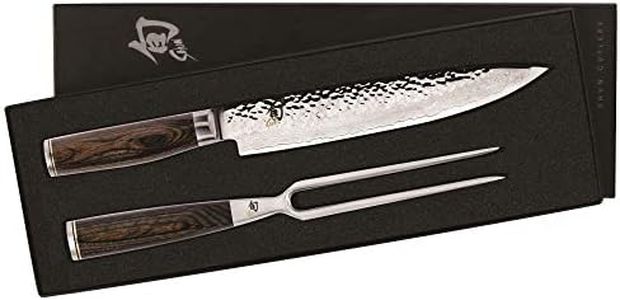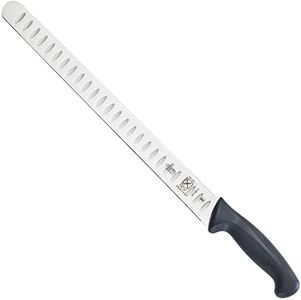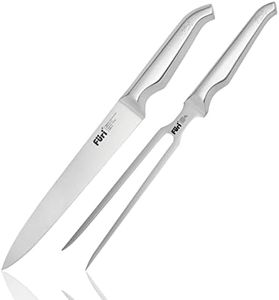We Use CookiesWe use cookies to enhance the security, performance,
functionality and for analytical and promotional activities. By continuing to browse this site you
are agreeing to our privacy policy
10 Best Meat Carving Knives
From leading brands and best sellers available on the web.Buying Guide for the Best Meat Carving Knives
Choosing the right meat-carving knife can make a big difference when it comes to preparing and serving meats, whether it's for a special occasion roast or everyday meals. The right knife will help you achieve thin, even slices and enhance the presentation of your dish, as well as making the process safer and more efficient. When considering which carving knife to buy, it's important to think about your typical uses, the types of meat you often prepare, and how comfortable a knife feels in your hand. By breaking down the key features below, you'll be able to select a knife that best suits your needs.Blade LengthBlade length refers to how long the cutting portion of the knife is, typically ranging from 8 to 14 inches for carving knives. A longer blade makes it easier to slice through large pieces of meat, such as whole turkeys or roasts, in a single, smooth motion, resulting in more attractive and uniform slices. Shorter blades offer greater control and maneuverability for smaller cuts or detail work. If you mainly carve large roasts, hams, or briskets, consider a longer blade. For everyday use with smaller cuts, a shorter blade may feel more comfortable and practical.
Blade FlexibilityBlade flexibility refers to how much the blade can bend without breaking. A stiffer blade gives you more control over thick cuts and dense meats, ensuring the knife goes where you want it to. Flexible blades conform more to curves, which is useful for filleting or working around bones, though they're less common in traditional carving knives. If you mostly slice large, boneless items, a stiffer blade is ideal. If you occasionally prepare bone-in meats or need to trim fat, a slightly more flexible knife might be helpful.
Blade MaterialThe material of the blade affects sharpness, edge retention, ease of sharpening, and overall durability. Most carving knives are made from stainless steel, which resists rust and staining and is easy to maintain, or from high-carbon steel, which holds a sharper edge but can require more care to prevent rust. For general home use, stainless steel is a solid choice thanks to its balance of performance and maintenance. If you're particularly interested in sharpness and don't mind extra care, high-carbon steel could be considered.
Handle Comfort and GripHandle design plays a large role in both safety and comfort. Handles can be made from wood, plastic, or composite materials, with each offering different feels and maintenance needs. The handle should fit comfortably in your hand, provide a secure grip (especially if your hands get wet or greasy), and not create fatigue during longer carving sessions. If you have smaller or larger hands, pay special attention to handle size and shape to ensure you can hold it steadily. Testing different handle types, if possible, can help you find your preferred feel.
Blade Edge TypeCarving knives may have either a straight edge or a granton (also known as hollow edge) blade. A straight edge is simple, easy to sharpen, and works well for clean slices. A granton edge has shallow dimples along the blade, which help prevent meat from sticking and make each slice smoother. If you often carve moist or sticky meats, a granton edge can make your job easier, while a straight edge is great for those who value simplicity and easy upkeep.
Weight and BalanceThe weight and balance of the knife affect how it feels during use. A well-balanced knife, where the weight is evenly distributed between the handle and blade, makes slicing easier and more comfortable. Heavier knives might help cut through denser meats with less effort, but lighter knives can offer more precision. Your ideal choice depends on personal preference and what feels most comfortable in your hand, especially for longer carving tasks.

















